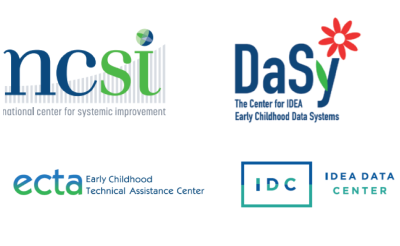
Resource Library
Guides. Briefs. Toolkits. Quick reference information. IDC and its partners created these data quality resources to help states better prepare to address their existing or emerging IDEA data quality needs. Use our search and filtering tools to navigate the library.
Resources 50 - 56 of 88
Format: Guides and Briefs
Statewide Assessment: Indicator 3 Measurement Changes From FFY 2019 to FFY 2020–2025This resource offers a side-by-side comparison of the SPP/APR Part B indicator measurement tables for FFY 2019 and FFY 2020 to highlight new SPP/APR reporting requirements and measurement changes to Indicator 3. The majority of students with disabilities participate in regular statewide assessments, and a small percentage of students with the most significant disabilities participate in alternate assessments. In FFY 2020, OSEP requires states to disaggregate statewide assessment results for these two groups of students with disabilities (i.e., those who participate in the regular assessment and those who participate in the alternate assessment). OSEP also requires states to calculate a “proficiency rate gap” between students with and without disabilities who participate in the regular statewide assessment.
Format: Guides and Briefs
A State Guide on Identifying, Correcting, and Reporting Noncompliance with IDEA RequirementsThe Individuals with Disabilities Education Act (IDEA) requires states to monitor and enforce IDEA Part C and Part B requirements, with a primary focus on those requirements that are most closely related to improving results and functional outcomes for infants, toddlers, and children with disabilities. To support states to carry out these monitoring responsibilities, A State Guide on Identifying, Correcting, and Reporting Noncompliance with IDEA Requirements describes the IDEA requirements related to identifying noncompliance, making findings of noncompliance, correcting and verifying correction of noncompliance, and federal reporting on compliance and correction of noncompliance in the state’s SPP/APR. This guide is based on the Office of Special Education Programs (OSEP) Memo 09-02: Reporting on Correction of Noncompliance in the Annual Performance Report Required under Sections 616 and 642 of the Individuals with Disabilities Education Act and the OSEP Frequently Asked Questions on Identifying and Correcting Noncompliance and Reporting on Correction in the SPP/APR.
This companion resource to A State Guide on Identifying, Correcting, and Reporting Noncompliance with IDEA Requirements summarizes the responsibilities of local early intervention programs or Local Education Agency, state Lead Agency or State Educational Agency and data that needs to be reported to OSEP on compliance, correction of noncompliance and verification of correction for SPP/APR indicators.
Format: Guides and Briefs
Success Gaps Rubric: Addressing Equity, Inclusion, and OpportunityThis rubric allows a team of users from a district or school to systematically examine the root causes of success gaps among groups of students by focusing on equity, inclusion, and opportunity. The recently updated rubric now includes considerations for children as young as preschool age. A complementary white paper provided the research-based background that supported development of the rubric.
Format: Applications and Spreadsheets
Equity Requirements in IDEAThis resource compares the three equity requirements in IDEA (disproportionate representation, significant discrepancy, and significant disproportionality) across various elements to explain the similarities and the differences among the requirements.
The following is a list of IDC resources that states can use to support their understanding and actions related to the FFY 2020–2025 Part B SPP/APR. States can use the resources to improve communication about the FFY 2020–2025 SPP/APR requirements and encourage increased engagement among state staff and stakeholders related to SPP/APR planning and implementation.
Format: Toolkits
Success Gaps Toolkit: Addressing Equity, Inclusion, and OpportunityThe Success Gaps Toolkit presents a process for using data and the Success Gap Rubric to identify root causes of gaps between groups of children in districts or schools. These success gaps occur when the education system is not meeting the needs of all groups of children and outcomes for some groups are different than outcomes for most groups. The toolkit, with its process and materials, provides a manageable and defined way for districts or schools to identify success gaps that are present and their root causes and then make a plan for addressing the gaps. The success gaps may be the graduation rate of students who are English learners compared to the rate of all other children, the out-of-school suspension rate of children who are Black compared to the rate of all other children, the identification of children who are Hispanic as children with specific learning disabilities compared to the identification of all other children, and other gaps.
Format: Guides and Briefs
Parent Involvement Data: How to Measure and Improve Representativeness for Indicator B8This interactive resource provides states with an overview on how to gather representative parent involvement data for Part B SPP/APR Indicator 8. The resource defines key concepts such as representativeness, sampling, nonresponse bias, response rates, and weighting. It also offers information on how to improve the quality of parent involvement data, including strategies that can help states collect representative data and evaluate and improve the representativeness of their data before, during, and after data collection.







